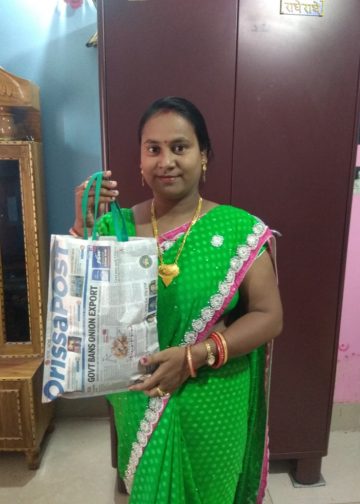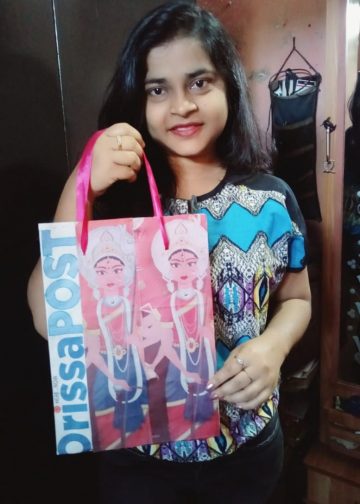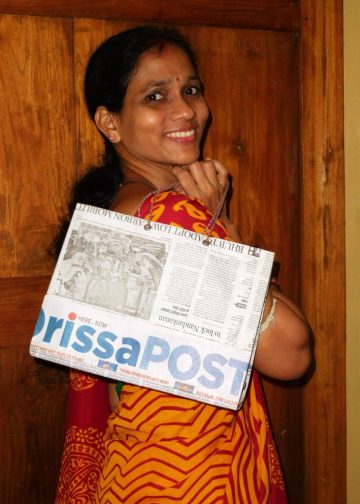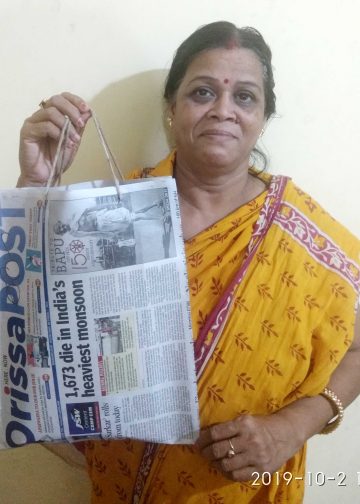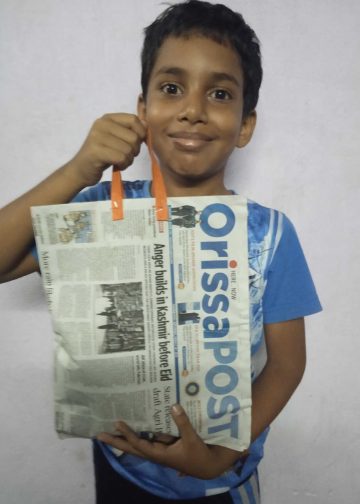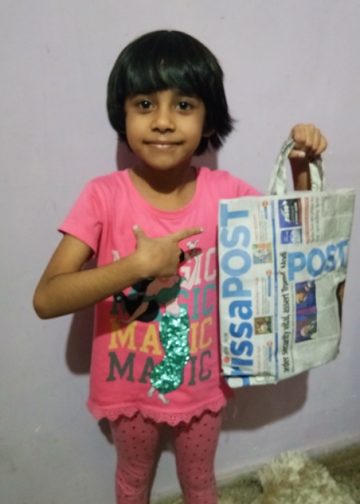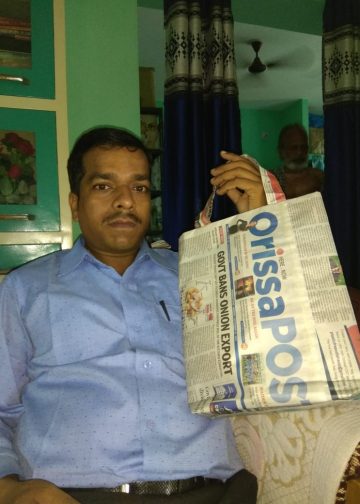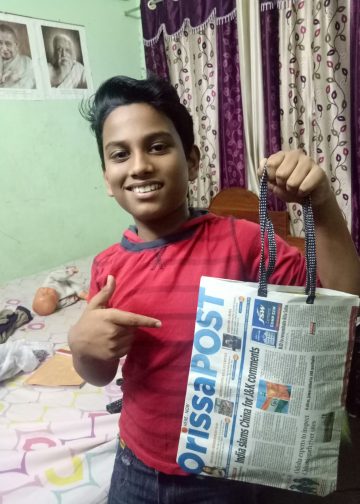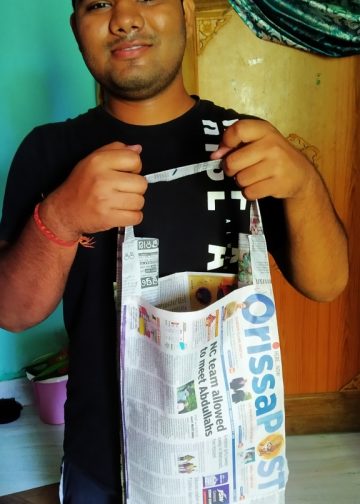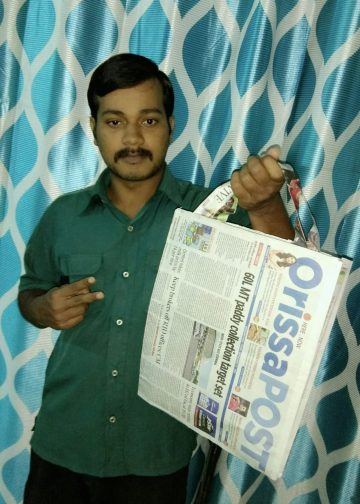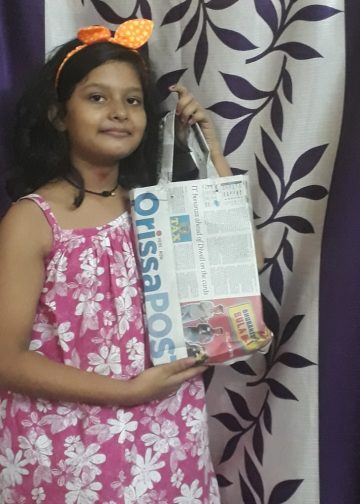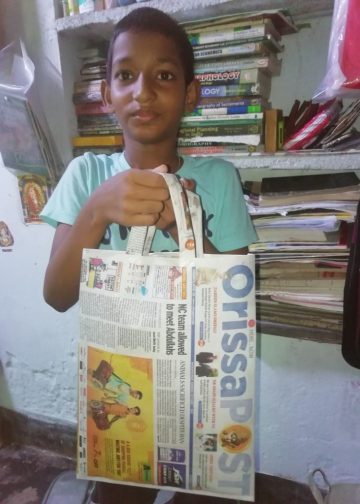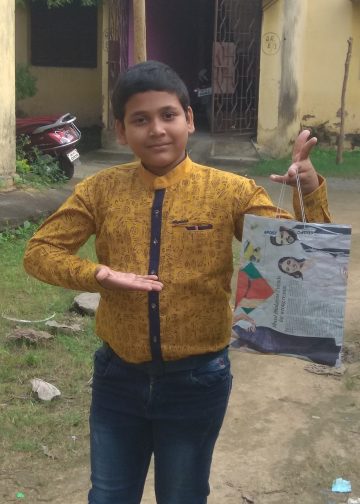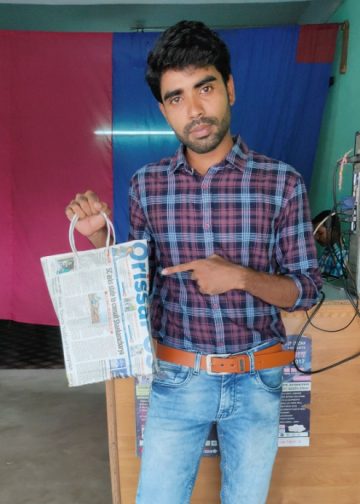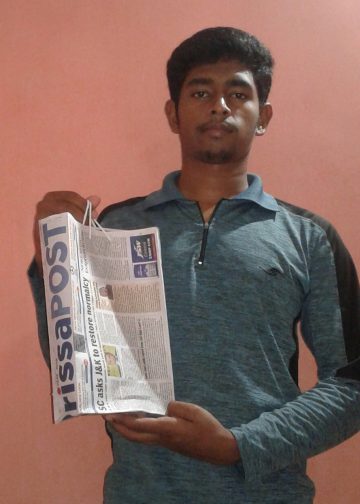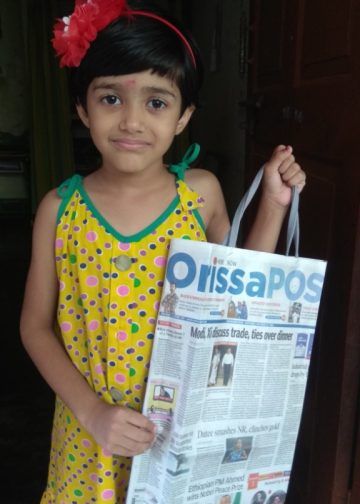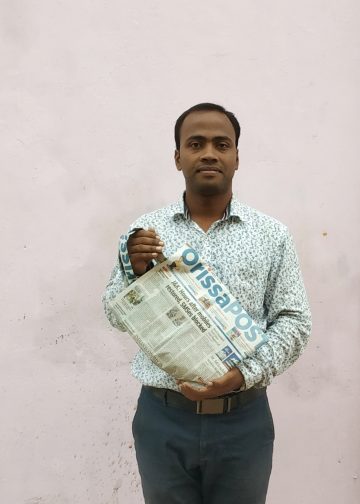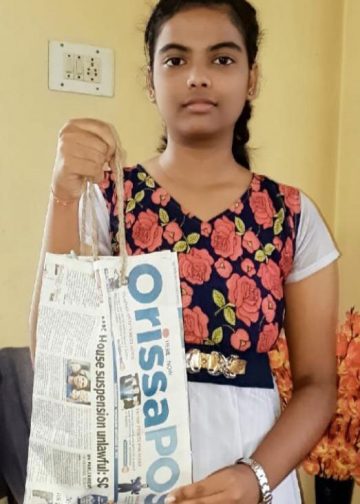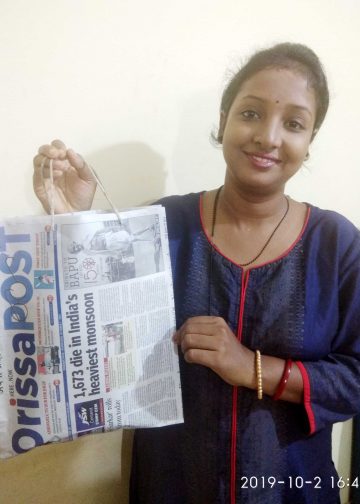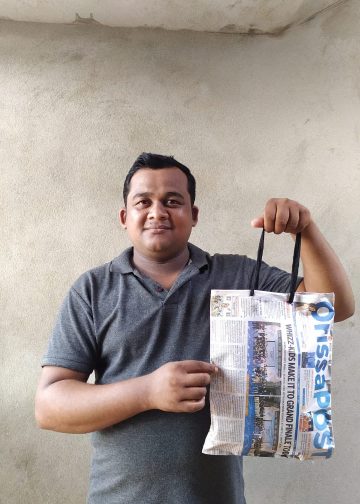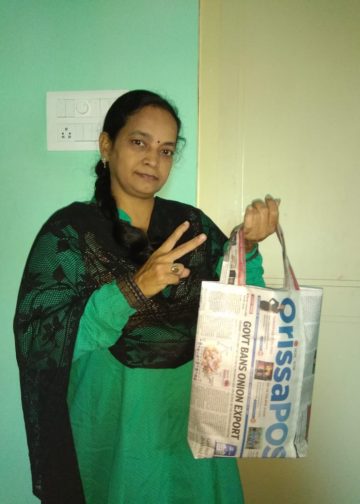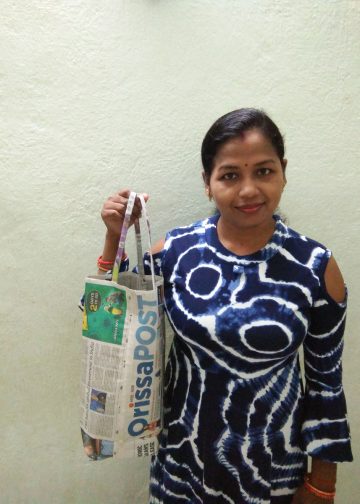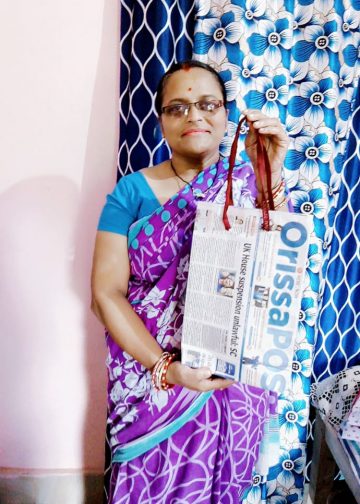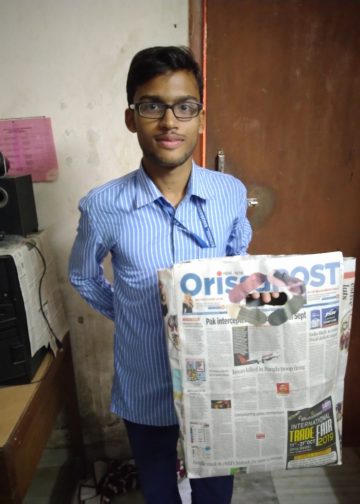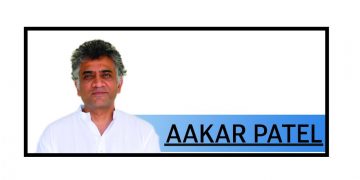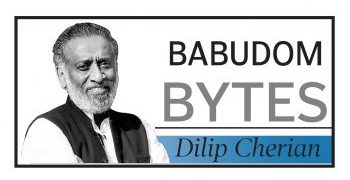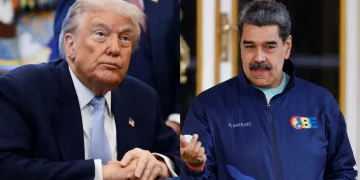Early morning when the food vendors on the street put up their large umbrellas to begin business for the day, Krishnendu Das (41) pulls his trolley away from the main road, and into the narrow lanes. He operates just like any other kabadiwala (scrap collector), making his presence known in the neighbourhood with loud calls. But the day always starts with a bunch of empty sacks, large, waiting eagerly for scrap plastic and metal on the back of the trolley.
“The sooner you’re out for work, the better. You can cover more area that way and return early,” says Das who is from the Medinapore region of West Bengal. The eldest among five sisters and two brothers, a young Krishnenducame to Bhubaneswar after the sypercyclone of 1999, using connections of one of his sisters married in the city.
In Indian cities people belonging to the same socio-economic class, be it from the same caste or religion, tend to live together separate from people of other castes and religions
Somehow, he got into the trade of ferrying things with a trolley and worked for almost a decade transporting chips and cement to construction sites. “Then someone suggested me that I should try dealing with scrap, as there is more money in that than in carrying construction material. So, since around 2012 I’ve been in this line of work,” he says.
Das lives in the Saliasahi slum. The scarp dealer he works for has given him accommodation there along with some 33 other kabadiwalas. The rent is deducted from the payments due, and it’s convenient as sharing brings down the cost of space in the city. But there is more to Krishnendu’ssituation than what meets the eye. He comes from an agrarian family, with little land, that belongs to the Scheduled Castes. The Saliasahi slum is known to have given shelter to people from the lower castes, like him, migrating to the Capital from across the state and outside.
For these migrants, who number in tens of thousands, the slum, in its familiarity, has been a reliable destination. Often as it happens, people navigate strange, new places with help of others from their own community, like a cousin or an uncle who has already been there, and can help them find a roof over their heads and job to fill their stomachs.
But this phenomenon is not limited to Bhubaneswar or Odisha, it repeats itself over and over across all the major cities of India, as documented by a working paper titled‘Residential Segregation and Unequal Access to Local Public Services in India: Evidence from 1.5m Neighbourhoods,’ shared recently by one of the participating researchers on social media.
Some dreams that remain unfulfilled
The paper, authored by Sam Asher, Kritarth Jha, Anjali Adukia, Paul Novosad, and Brandon Tan, compares residential segregation in urban India to race-based Black/White segregation in United States. It means that in Indian cities people belonging to the same socio-economic class, be it from the same caste or religion, tend to live together separate from people of other castes, other religions, as in the United States, people of African-American descent live in neighbourhoods exclusively meant for them, with other Black people, while White people of Caucasian descent live in other parts of the city with people like themselves, other white people.
“India’s cities have a high level of segregation on the basis of both caste and religion—about as much as current levels of Black/White segregation in the United States. While this level of segregation is substantial, it is considerably less than US segregation at its peak in the 1960s and 1970s,” says the paper.
The results show that 26 per cent of India’s Muslims live in neighbourhoods that are more than 80 per cent Muslim, while 17 per cent of SCs live in neighbourhoods that consist of more than 80 per cent of scheduled caste people.
“Scheduled Caste segregation in cities is just as high as it is in rural areas, and it is even higher for Muslims,” the paper says. The finding is disheartening as people of the scheduled castes, often referred to as Dalits, face caste-based discrimination in villages, frequently ostracised and made to live in the outskirts in areas specifically marked for them. That’s why in a newly Independent India, cities represented freedom and a hope for people of the lower castes. Ambedkar had famously exhorted Dalits to move to cities, abandoning the hierarchy of rural India, to escape the discrimination and oppression of the feudal caste system, and avail themselves better opportunities for education and employment.
Cities, then, were symbols of upward mobility and cosmopolitanism, people of different hues occupying the same working and residential spaces, leading to exchange of culture and language and ideas, fostering commerce, economic development, and further strengthening of the idea of India as a nation that has accomplished unity in diversity.
However, as this study and many others like it demonstrate, the system of discrimination prevalent in rural India has to a great extent reproduced itself in urban India. And the segregation has consequences in terms of availability of public services like clean drinking water, electricity, sanitation, schools and hospitals.
“Government-supplied public services are less likely to be found in neighbourhoods with high numbers of SCs and Muslims,” write the authors, adding, “Secondary schools, clinics and hospitals, electricity, water, and sewerage are all systematically worse in SC and Muslim neighbourhoods than in other neighbourhoods in the very same cities.”
But interestingly the only exception, they say, are primary schools, “which are more common in urban SC neighbourhoods (but less common in rural SC neighbourhoods),” perhaps reflecting the success of the Right to Education Act, 2009, which mandates free education for children up to the age of 14. It means, that for the marginalised sections of the society, secondary education and higher education still remain high-hanging fruits.
Shoulders strong enough to stand on
Raghunath Pradhan is in his mid-forties and belongs to the scheduled tribes (STs) from the Kandhamal district of Odisha. As he works as a mason in the Chandrasekhar area of Bhubaneswar, he lives in a slum near the Niladri Vihar area adjacent to the Bharatpur Reserve Forest. What keeps his brain occupied is the future of his elder daughter, who has completed her eleventh-twelfth from a Kendriya Vidyalaya and now wants to pursue BCA (Bachelors in Computer Application).
“For 23 years I’ve been in Bhubaneswar, and I’ve done everything in my capacity to give my children a good education,” says Pradhan, father to two girls. “But these professional degrees cost so much that I can’t even imagine how to fund her education. If you take admission in a private college or in a self-financed course at a government college, it would cost you 1.8 to 2 lakhs. How am I supposed to save all that money with my daily wages?” asks Pradhan.
One option for people like him, he says, is to get a loan against some land. But here in the city, he has no land to his name, even though he has been living here for two decades. He votes in the municipal elections and collects subsidized food through a ration card, but a land deed is a far cry. “Eventually I know we are going to be displaced. And when that happens all the people who have land to their names will get apartments, but for someone like me, the only option left is to go back to the village. So, for us, my daughter is our only hope,” he says.
For Krishnendu though, sanitation and drinking water are still a concern. “Usually, we don’t have any problem getting water or medicines, but when it rains or there is a storm, it takes the authorities weeks to repair the water pipes and powerlines, which I don’t think is the case with people living in residential complexes,” he says as he recounts the experience of filtering sand from water in the aftermaths of cyclone Fani.
Seeing beyond our limitations
About this difference in quality of services provided to rich and poor neighbourhoods, the paper says, “The magnitude of the disparities is large. For example, compared with a 0 per cent Muslim neighbourhood, a 100 per cent Muslim neighbourhood in the same city is 10 per cent less likely to have piped water infrastructure and only half as likely to have a secondary school. For schools and clinics, facilities provided entirely by government, the disadvantage in Muslim neighbourhoods is double that of the disadvantage in SC neighbourhoods.”
But for Mohammed Alim, who has been running a helmet shop in the Unit-IV area for the last decade or so, Bhubaneswar is different from other Cities of India. He lives in a mixed neighbourhood in the Sunderpada region, which has all the basic amenities like piped water and electricity. “I won’t lie, I’ve never experienced any kind of discrimination for my religion. We’ve got relatives in other places but what’s good about Odisha and Bhubaneswar is there is understanding among people and a sense of brotherhood. No one interferes in your affairs as long as you don’t mess with them,” says Alim, who casually waves a ‘hello’ to every passer-by.
“See, I believe, at the end of the day, only thing that matters is humanity. When those three hundred people died, did death ask them about their religion?” he questions rhetorically referring to the Bahanaga train tragedy when asked about his experience as a Muslim man. “Social media is responsible for much of the animosity between Hindus and Muslims. If you open Facebook, there is constant hate-mongering. Nowadays, I use it very rarely,” he adds.
The effects of residential segregation are not limited to availability of public services, segregation also influences the future of children living in these neighbourhoods. The kind of people you’re surrounded by and the culture you experience as a kid, later determine your disposition towards life and work. But there is enough space for parents, willing to push their limits, to shape their kids’ futures.
The paper says, “Young people in SC neighbourhoods have systematically worse outcomes than those in non-SC neighbourhoods— but the difference is mostly explained by the economic status of their families. In Muslim neighbourhoods, outcomes for young people are equally poor, but can be only partially explained by parent consumption and education.” Alim, with an I’ll-do-my-best attitude, sends his two kids to a private CBSE-school and has big plans for them.
However, as the authors of the paper admit, the study doesn’t identify any specific causes behind this high degree of residential segregation, which is a measure limitation as you can’t treat a disease without a diagnosis. “The results are not attributed to specific policies of any government,” they write. And as the data is from 2011-13, it says “nothing about the policies of the current government or what has changed in the last decade.”
Identifying one of the causes, in an interview to Artcle14, author of a similar study on residential segregation Naveen Bharathi, says, “Many housing cooperative societies are formed along caste and religious lines, and there is no law that prohibits them from doing so. In other words, housing cooperative societies are a proxy for caste-based urban development and are major contributors to caste-based residential segregation in Indian cities.”
Suggesting legal intervention as a solution to this menace, he said, “We urgently need anti-discriminatory housing legislation, and policymakers need to look into the issue. Any religion-based cooperative societies and associations should be made illegal.”
If we take a city like Bhubaneswar, a modern and planned city, other studies show that a number of government schemes have improved access to public goods like clean water and sanitation in parts of the city inhabited by people from marginalised groups, including the major slums, where the BMC sanitation workers come every morning to collect the trash.
But more than the basic amenities, people of the scheduled castes, like anyone else, seek a life of dignity. Krishnendu Das, for example, has only one complaint against Bhubaneswar: Untouchability. “People here are mostly good, but sometimes if I’m thirsty and I ask for water in some household I’m collecting scrap from, the lady of the house would hesitate giving water to my hand. She would place a bottle on the floor and ask me to take it myself. You’re blessed with so much wealth, can you not have the basic decency to serve someone water in a glass? Is that too much to ask for?” he questions as he pulls his trolley into a narrow lane, with the hope of filling his empty sacks.
References:
- Residential Segregation and Unequal Access to Local Public Services in India: Evidence from 1.5m Neighborhoods, by Sam Asher, Kritarth Jha, Paul Novosad, Anjali Adukia, Brandon Tank
- Recasting inequality: residential segregation by caste over time in urban India, by Gayatri Singh, Trina Vithayathil and Kanhu Charan Pradhan
- Isolated by Caste: Neighbourhood-Scale Residential Segregation in Indian Metros, by Naveen Bharathi, Deepak Malghan and Andaleeb Rahman
First published in SundayPost June 25-July 1






